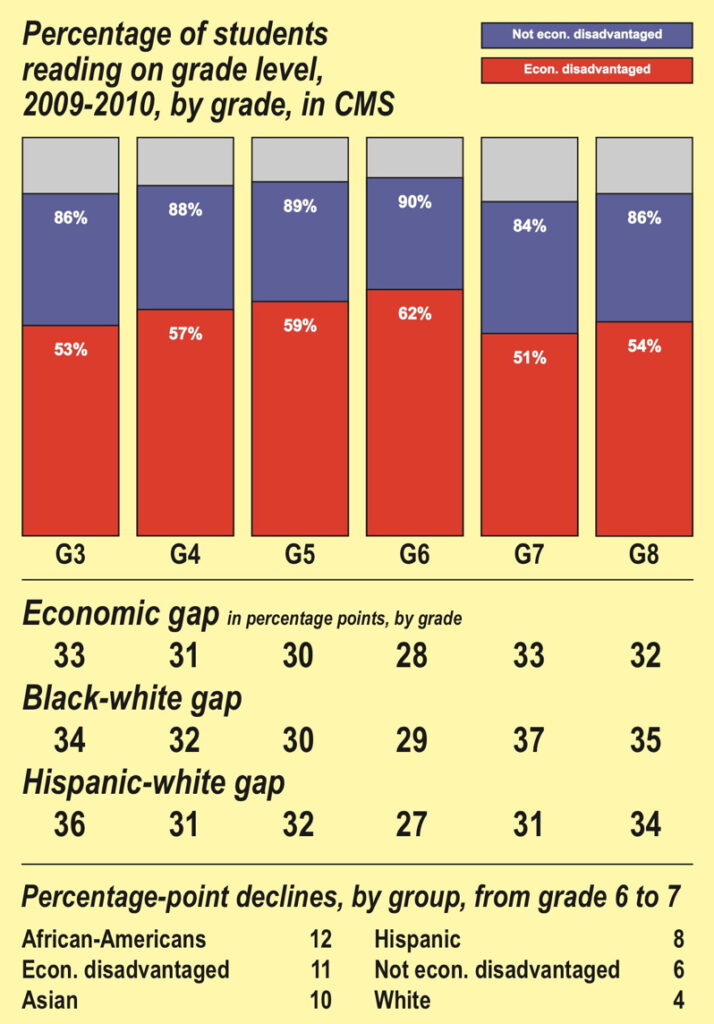
July 28, 2010
I’ve been making charts about CMS academic achievement off and on for nearly 30 years. The names of the tests come and go. The benchmarks come and go.
What remains nearly the same is the test-score gap between the advantaged and the disadvantaged of our society.
Some of the children I saw in CMS classrooms when I came to Mecklenburg are now grandparents. And those children of the late 1970s who did not get a good education? Should we assume that they somehow pulled themselves up by their bootstraps to create the academically gifted of today? I don’t. I assume that they continue to struggle, that many of their children struggled and that their grandchildren are struggling in today’s classrooms.
I saw one of my favorite fourth-graders recently. I handed her a small pyramid. On the bottom was a sticker that read, “Made in Egypt.” This fourth-grader got the “Made” and the “in” just fine. But she had no earthly idea how to read the last word, how to sound it out, and apparently no worldly knowledge to fall back on that would connect the shape with the word.
I appreciate that overall test scores in CMS are rising. But the score gaps are huge. And worse, to me, is the reality that the gaps have persisted for two generations.
On another related matter: At the bottom of the chart above is some data about the cliff that sixth-graders seem to fall off of during seventh grade. I wish a few board members could focus on that in their spare time. It is clear to me, even without a wheelbarrow of additional data, that something – or more likely a whole bunch of things – unwind in seventh grade that inexorably lead to the horrendous dropout rate for African-Americans, and African-American males in particular.
July 30 post script:
Asked today about the seventh-grade collapse of reading skills, a CMS teacher studying to be a principal told me that research suggests that textbook publishers are aware that they have very little on the market that makes reading attractive to middle-school African-Americans – and African-American boys specifically. The teacher said the publishers are begging writers for suitable material.
Source material for the chart above may be downloaded here.
